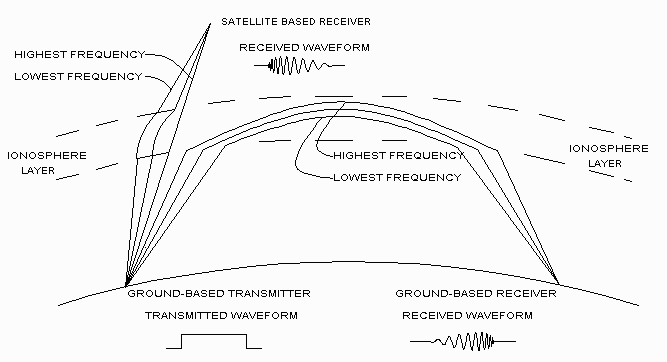Home Page or Table of Contents
The ionosphere acts as a dispersive medium to certain bands of radio frequencies, with the result that radio waves passing through the ionosphere are bent as a function of frequency, much as light is bent when passing through a prism. However, in the ionosphere, as opposed to a prism, the index of refraction is an inverse function of frequency, causing low frequencies to be bent more than higher ones. A particular case of interest is the dispersion encountered by a pulsed waveform, whose Fourier content is spread over a broad band of frequencies. Two cases illustrate this dispersion::
These effects are illustrated below using a ground-based omnidirectional transmitter and both ground-based and satellite-based receivers (for clarity, both the curvature of the earth and the ray paths are considerably exaggerated):

The most striking difference between the two modes of propagation is that ground-to-ground propagation is characterized by the lowest frequencies arriving first, while ground-to-satellite propagation is characterized by the highest frequencies arriving first. The reason for this can be seen by comparing the relative path lengths of the different frequencies as shown in the figure above. As a result of this phenomenon, there is a fundamental difference which must be observed in the design both of radar systems operating in this regime, as well as of systems which are intended to monitor the behavior of pulsed phenomena.